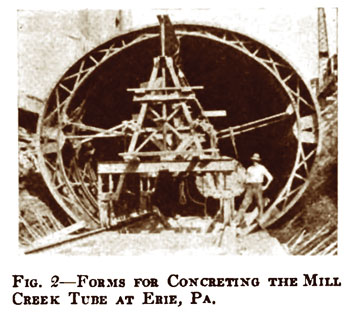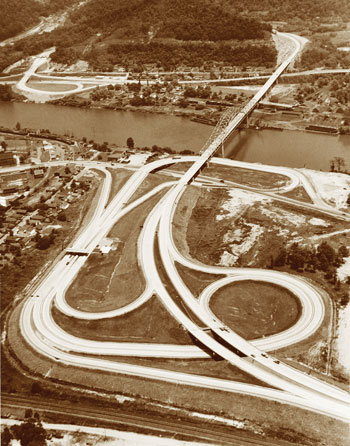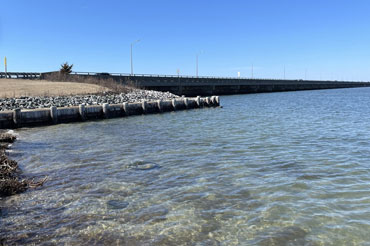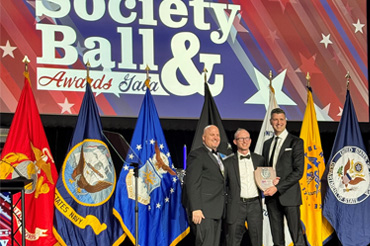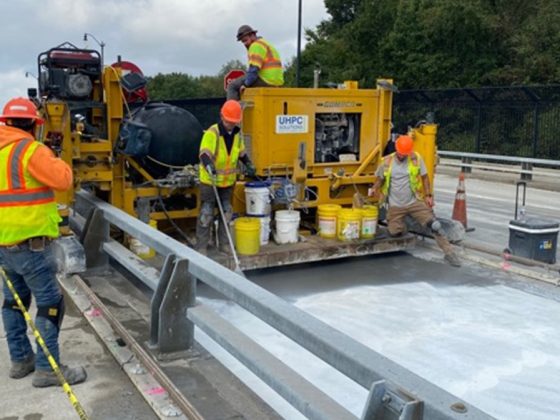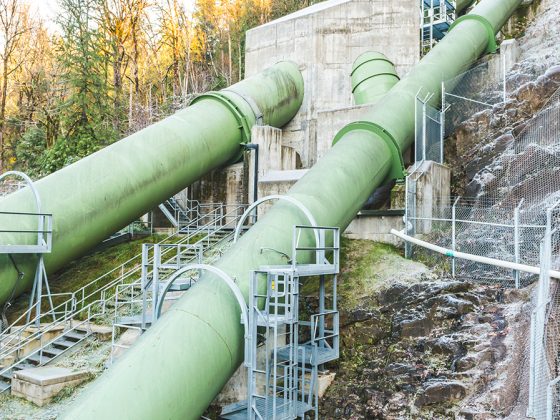Shaping the World, One Project at a Time
When Farley Gannett partnered with Theodore Seelye to form “Farley Gannett, Consulting Engineer” in Harrisburg, Pennsylvania, on Aug. 1, 1915, they likely never imagined their company would be shaping infrastructure and improving communities 100 years later as Gannett Fleming—and with more than 50 offices and 3,000+ employees.
Party of Two
In 1915, Gannett and Seelye were just a party of two with dreams of helping to advance America’s infrastructure during some of the country’s most exciting times in urban development. Since then, our history has closely paralleled the history of infrastructure systems in the U.S. during the 20th and 21st centuries. Rapid urban growth and the need for mass transportation, safe drinking water, and flood and pollution control were a few of the factors that fueled demand and opportunity for engineering services.
Early Work to Rich History
Just two short days after opening their doors, Gannett and Seelye’s young company was put to the test in its first major assignment. And it was a somber one. Nearly 300 miles away in Erie, Pennsylvania, a tragic event known as “Erie’s Blackest Day” occurred when Mill Creek flooded the town, killing 36 people and causing millions of dollars in damage. To prevent future catastrophes, Gannett and Seelye were called upon to study flood control problems on the creek and later design and construct a large conduit to move excess flows to Lake Erie. Our rich tradition in water resources engineering was born.
An Enterprising Team
Gannett and Seelye were entrepreneurs of the first order. In the 1920s, they acquired electric and water utilities across the U.S. and began designing and building improvements to these systems. Once a utility was in good working order, it was sold to provide funds for the next acquisition. Having perfected this model in the states, electric utilities in South America became part of the portfolio in the late 1920s and early 1930s. We maintained ownership in a number of water utilities until 1955, which paved the way for our entrée into valuation and rate making for public utilities.
Further, Samuel Fleming, Jr. came to the firm in 1916 after working as an engineer with Central Hudson Gas and Electric Company in New York. Soon after, he joined the 315th Infantry, 79th Division, served in France with the American Expeditionary Forces, and returned to the firm after receiving numerous decorations for his service. As a financial caretaker, Fleming made certain the firm undertook fiscally sound endeavors over the course of his 50-year career.
Sustainability from the Start
We’ve always believed in sustainable initiatives that reduce human impact on the environment. As methods of sewage disposal in the U.S. moved away from drainage canals and polluted streams, Gannett Fleming was at the forefront of pollution abatement through the design of wastewater treatment, solid waste disposal, and air pollution control facilities as early as the 1930s.
Hitting the Road
As the nation’s highway system developed from a few miles of narrow, twisting roads to a vast network of expressways and turnpikes, so grew our highway and bridge capabilities. We designed major portions of the Pennsylvania Turnpike, which set the standard for the tolling industry and became the model for many toll roads that followed. The subsequent development of the interstate highway system in the 1950s and 1960s was a major catalyst for our further growth in the transportation market. Gannett Fleming not only kept pace, but became a pioneer of excellence in this area, with some projects hailed among the finest roadways and bridges in the U.S.
Riding the Rails
In the 1960s, we designed many of the new transit systems being constructed across the U.S., including a portion of the Port Authority Transit Corporation (PATCO) Speedline, the nation’s first high-speed mass transit system. In the early 1990s, we received a major general engineering contract from Amtrak, which led to an ongoing relationship spanning nearly 300 projects. Gaining ground in transit maintenance facility expertise, we designed the Long Island Rail Road’s Holban/Hillside Maintenance Complex, the largest facility of its kind in the country. And with our 1985 design of the Detroit People Mover – the first design-build project in the nation—and more recently, the PHX Sky Train® at Phoenix Sky Harbor International Airport, we now hold a prominent position in the automated people mover market.
Water: From Source to Tap
From early concepts through today’s cutting-edge methods, we’ve pioneered the safe and efficient collection, treatment, and distribution of potable water. During our history, we have completed more than 1,000 water supply projects that assist communities in finding new sources of water, maintaining the quality of present sources, treating water for safe consumption, and providing the means to transmit water from source to tap.
Building it Up
Since the earliest days, we’ve designed an array of public and private facilities, including major cantonments and airfields during World War II. Since that time, we have provided diverse, building-focused engineering and architectural design services across a broad array of businesses and industries. Now, we offer a robust building systems division with a wide range of services for facilities projects and includes LEED®-certified professionals who are dedicated to sustainable technologies and systems.
Restoring the Environment
As environmental awareness took center stage in the 1970s, we developed expertise in assessing and cleaning up thousands of hazardous waste sites. More than a half-century later, our environmental and regulatory practice is steadfast in protecting the health and safety of humans and the environment throughout the U.S. and abroad. From planning, permitting, and ecosystem restoration to remediation and compliance, our services provide clients with resilient and sustainable solutions for a better planet.
Technology-Based Decisions
We began using computing equipment to support engineering calculations in 1955, moved to computer-aided design and drafting in the mid-1980s, and evolved to include 3-D building information modeling today. Beyond engineering design, we began using computer-supported management decision making in the early 1990s. And we’ve developed geographic information systems (GIS) that guide logistics, traffic incident management, siting of services, and many other applications for the U.S. Department of Defense, state departments of transportation, and insurance companies.
A Global Perspective
An international demand for expert engineering services opened doors for us around the globe. Since the 1920s, we’ve completed hundreds of projects in more than 65 countries, with South America as our first international venture. Overseas activity expanded to include assignments in Central America, Europe, the Bahamas, Africa, and Canada. Today, we maintain offices throughout the U.S., Canada, and Qatar.
The Next Century
Since our modest beginning 100+ years ago, Gannett Fleming has evolved into a true multidisciplined, global infrastructure, and environmental solutions company. With a culture of innovation and a team of 3,000+ highly qualified professionals, we’re ready to meet your project challenges and to pioneer contributions that improve our communities and sustain our world through the next century.

CONTACT US
Are you looking for a reliable, collaborative partner? Do you have a planning, design, or construction challenge? We want to hear from you.

MAKE A DIFFERENCE
Ready to tackle some of the biggest challenges facing our communities? Join the team that’s leading the charge.
